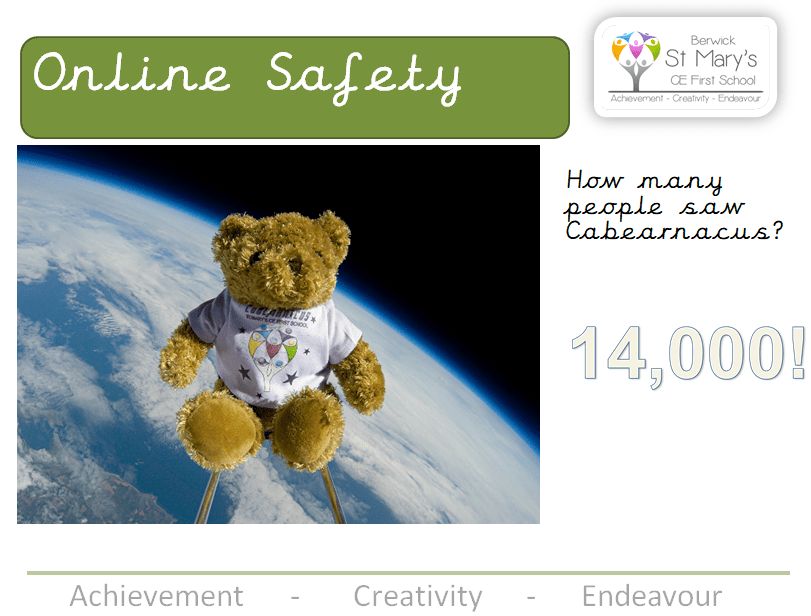‘You must teach what is appropriate.’ Titus 2:1
Our Computing lead is Miss Simpson.
e purpose of computing in the national Curriculum is to equip pupils to use computational thinking and creativity to understand and change the world. The core of computing is computer science in which the children are taught how digital systems work and put this knowledge to use through programming to create programs, systems and content. Computing ensures that pupils become digitally literate and develop their ideas through information and communication technology to prepare them for the future workplace and as active participants in a digital world. The aims of computing in the National Curriculum include the children understanding and using algorithms, writing computer programs, and become responsible, competent, confident and creative users of ICT.
At Berwick St Mary’s First School pupils in Year 1 to Year 4 take part in a weekly discrete computing lesson which, wherever appropriate, is linked to the topic that the children are studying. In our weekly sessions we embed e-safety starters to ensure our pupils know how to use technology safely. Our pupils are strongly encouraged to use ICT to support their learning at all times; this may be through easy access to Ipads and chromebooks in the classrooms or at after school clubs. The school provides pupils with access to a range of additional online resources including School360. Teaching of computing is supported by Northumberland County Council’s ‘Teaching Computing in the Primary School’ document.
Staying safe whilst using ICT and online is an integral part of Computing lessons and is supported by half termly lessons based on SWGfL’s ‘Digital Literacy and Citizenship’ programme.
Teaching of Computing is detailed in our half termly curriculum maps.
Click here to view the full National Curriculum Programme of Study that we follow for Computing.
Our vision is to embed computing in as many learning opportunities as possible. This will provide our children with concrete experiences of when and how they can use digital media in different aspects of their lives.
Children should develop Computing skills that can thoughtfully applied in a range of different situations, with children developing increasing independence in the choices they make over which technology to use to help them reach the desired outcome. As they progress through KS1 and 2 children will become increasing confident in the application of their digital skills, becoming increasingly efficient and effective communicators, collaborators and analysts, showing imagination and creativity in their use of ICT in different aspects of their learning and life beyond school.
Curriculum
Within both KS1 and KS2 there is an hour lesson planned and resources weekly along with extra Computing taught in cross-curricular lessons. Evidence of this will be shared on Tapestry.
To help ensure children have the opportunity to develop a wide range of skills, experiences and competencies with technology, the curriculum has been broken down into 5 key areas.
•Using Technology
•Algorithm and Programs
•Data Retrieving and Organising
•E-Safety
•Communicating and Presenting
Computing at St Mary's
Esafety
E-safety is a fundamental element of computing teaching and technology use at St Mary’s. Children will be taught E-Safety at the beginning of each year (Autumn Term 1). It will then be recapped at the beginning of each term and where necessary throughout the year. Year 4 will be taught E-Safety during Summer 2, before the holidays, supporting the transition between schools.
Early Years
In Early Years children are given the opportunity to explore technology in the classroom environment. Children are given the opportunity to use technology to support with other cross curricular areas such as literacy and numeracy. The children are provided with username and password for their own School 360 account and are encouraged to access resources at school and home. During child initiated play children have the opportunity to take part in Computing based activities through ‘diamond challenges’ as well as adult led sessions. E-Safety is taught and discussed during circle time activities and teacher led sessions.
Key Stage 1
In Key Stage 1 children create their own username and password for their school 360 account. Through this the children develop their computing skills. They present work created, learn how to save and retrieve it and use floor turtles and instructions for programming. E-Safety is taught at the beginning of the year and recapped at the start of each term and where necessary throughout the year.
Key Stage 2
In Key Stage 2 children present work using resources on School 360 they create their own publications, blogs and send/receive class emails. They use J2code to plan more complex sequences of instructions for on-screen turtles and test and amend these instructions for different purposes. E-Safety is taught at the beginning of the year and recapped at the start of each term and where necessary throughout the year. Year 4 will be taught E-Safety during Summer Term 2, before the holidays, supporting the transition between schools.

